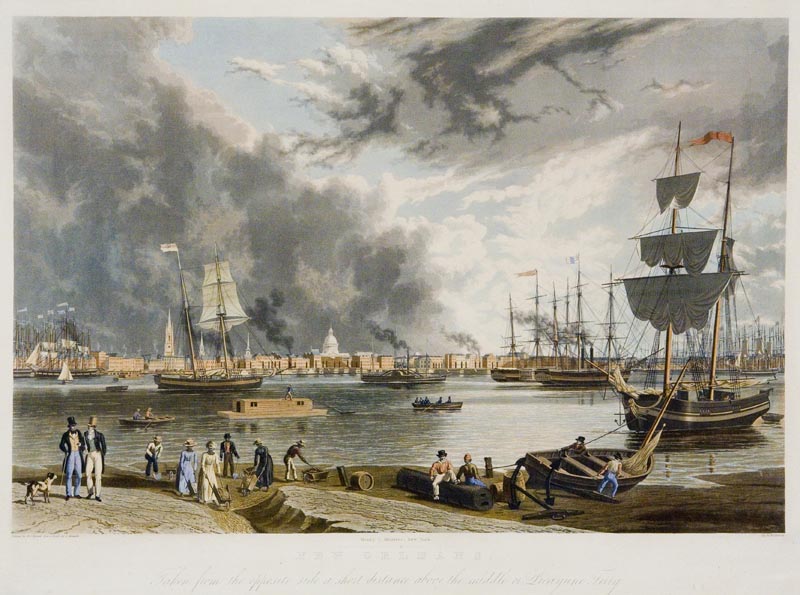Abstract
This article provides an overview of the flatboat era in American history, highlighting the important role that flatboats and dogs played during this time. The flatboat era, which occurred in the early 19th century, saw the rise of flatboats as a common mode of transportation and commerce on the Western rivers of the United States. Flatboats were used to transport goods and people downstream, and were often accompanied by dogs, which served as protectors, hunters, and companions to the flatboatmen. The article explores the construction and use of flatboats, the dangers and challenges of traveling on the rivers, and the impact that the flatboat era had on American commerce and westward expansion.
Transporting Goods and People
The flatboat era of American history refers to a period in the early 19th century when flatboats were a common mode of transportation and commerce on the Western rivers of the United States. Flatboats were large, flat-bottomed boats that were used to transport goods and people along the Mississippi, Ohio, and other rivers in the Midwest and South.
During this era, the flatboat played a crucial role in the growth of American commerce and westward expansion. Farmers and merchants would load their goods onto flatboats and float them downstream to markets in New Orleans, where they could be sold for a profit. Flatboats were also used to transport settlers and their belongings to new lands in the West.
Flatboats were relatively cheap and easy to build, making them accessible to many people. They were typically made of wood and were constructed without nails or screws, using only wooden pegs and joints. The boats were propelled downstream by the current of the river, and flatboatmen, often young men seeking adventure and opportunity, would navigate the boat using long poles or oars.
However, flatboats had their limitations. They could only travel downstream, and were often broken up and sold for lumber once they arrived in New Orleans, making the return journey difficult. Flatboats were also vulnerable to storms, rocks, and other hazards, making travel on the rivers dangerous.
The Roles of Dogs
Dogs played an important role during the flatboat era in the United States. While flatboats were used to transport goods and people along the Western rivers, dogs were commonly used as protectors and hunters, and they were often brought along on the flatboats to serve these purposes.
During this time, English Shepherds were a popular dog breed. They were primarily used as herding dogs, but they also excelled in other tasks such as guarding livestock and property, hunting, and providing companionship to their owners. As the United States expanded westward, English Shepherds accompanied settlers and continued to play a crucial role in agricultural life. The breed’s popularity and usefulness during the flatboat era contributed to its enduring status as a favored working dog in rural America.
One of the most important roles that dogs played on the flatboats was as protectors. Flatboatmen would often bring along their dogs to protect them from wild animals, such as bears, wolves, and panthers, that they might encounter along the way. The dogs would also protect the flatboats and their cargo from potential thieves or robbers.
Dogs were also used as hunters on the flatboats. The flatboatmen would often hunt for food along the riverbanks, and their dogs would help them track and capture game. Some flatboatmen even trained their dogs to catch fish in the river.
In addition to their protective and hunting roles, dogs were also valued as companions on the long journeys down the rivers. Many flatboatmen would form close bonds with their dogs, and the dogs would provide comfort and entertainment during the long days on the river.
Conclusion
In conclusion, the flatboat era was a significant period in American history, characterized by the use of flatboats as a primary mode of transportation and commerce on the Western rivers of the United States. The flatboats played a crucial role in the growth of American commerce and westward expansion, as they enabled farmers and merchants to transport their goods downstream to markets in New Orleans, while also facilitating the movement of settlers to new lands in the West. Moreover, the flatboat era also saw the important role of dogs in early American life, as they served as protectors, hunters, and companions to the flatboatmen. The era came to an end with the rise of steamboats, but its legacy lives on as an important symbol of American history, representing the pioneering spirit and sense of adventure that drove westward expansion and commerce in the early days of the United States.
References
- Allen, M.R. 1994. Western Rivermen, 1763–1861: Ohio and Mississippi Boatmen and the Myth of the Alligator Horse. LSU Press. http://esbt.us/bt.
- Baldwin, L.D., and H.B. Cushman. 1941. The Keelboat Age on Western Waters. The Library of Western Pennsylvania History. University of Pittsburgh Press. http://esbt.us/bs.
- De Voto, B.A. 1997. Mark Twain’s America. Bison Books. University of Nebraska Press. http://esbt.us/br.

